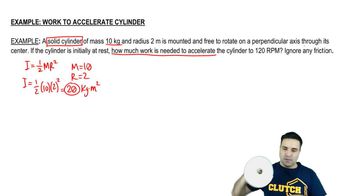Conservation of Energy with Rotation definitions Flashcards
 Back
BackConservation of Energy with Rotation definitions
1/15
Terms in this set (15)
- Rotational Kinetic EnergyEnergy due to an object's rotation, calculated as 1/2 I omega^2, where I is moment of inertia and omega is angular velocity.
- Linear Kinetic EnergyEnergy due to an object's linear motion, calculated as 1/2 m v^2, where m is mass and v is velocity.
- Moment of InertiaResistance of an object to changes in its rotational motion, for a solid disc I = 1/2 M R^2.
- Angular VelocityRate of change of angular position of a rotating body, often denoted by omega.
- Conservation of EnergyPrinciple stating total energy remains constant in an isolated system, accounting for kinetic and potential energies.
- Non-conservative WorkWork done by forces like friction or external forces, not stored as potential energy.
- Perpendicular AxisAn axis at a 90-degree angle to the plane of rotation, around which an object spins.
- Solid DiscA circular object with uniform mass distribution, used in rotational dynamics problems.
- UnwindingProcess where a cable or rope is pulled off a rotating object, affecting its angular velocity.
- Without SlippingCondition where there is no relative motion between surfaces in contact, allowing v = R * omega.
- Potential EnergyEnergy stored due to an object's position or configuration, often related to height in gravitational fields.
- RadiusDistance from the center to the edge of a circle or disc, crucial in calculating moment of inertia.
- ForceAn influence that causes an object to undergo a change in motion, measured in newtons.
- JoulesUnit of energy in the International System of Units, used to measure work or energy.
- Radians per SecondUnit of angular velocity, describing how fast an object rotates or revolves relative to another point.



